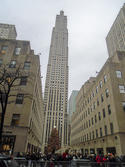The ongoing pandemic is reshaping the geography of our planet, helping some areas and hurting others. In the West, the clear winners have been the sprawling suburbs and exurbs, while dense cores have been dealt a powerful blow. The pandemic also has accelerated class differences and inequality, with poor and working class people around the world paying the dearest price. These conclusions are based on data we have repeatedly updated. read more »
New York
Could COVID Exodus Speed the Heartland Revival?
Over the past two decades America’s largest urban areas enjoyed a heady renaissance, driven in large part by the in-migration of immigrants, minorities and young people. But even as a big-city dominated press corps continued to report on gentrification and displacement, those trends began to reverse themselves in recent years as all three of those populations started heading in ever larger numbers to suburbs, sprawling sunbelt boomtowns and smaller cities and out of the biggest ones. read more »
Trust the Science: The Blue State Surge is Real
For months the conventional wisdom among Democrats, amplified by their obliging claque in the media, was that lockdowns played an essential role in containing COVID-19. The great heroes, in addition to Anthony Fauci, were hardline governors like Michigan’s Gretchen Whitmer, California’s Gavin Newsom and, most of all, New York’s Andrew Cuomo. read more »
Partnership for New York CIty Poll: Strong Remote Work Future
The Partnership for New York City polled its members in the last month and found that, as of early March, 10% of Manhattan office workers who were working remotely (generally working at home) had returned to the office. This is unchanged from October. The purpose of the survey was to project future shares of working in the office and working at home in the nation’s largest central business district (CBD). read more »
Why More Americans Should Leave Home and Move to Other States
America has been lazily divided by pundits into red and blue states, as if there weren’t constant movement of people between them. Fortunately, reality is a lot more purple — and hopeful — as immigrants, people of color and millennials reshape parts of America by voting with their feet and moving.
These demographic groups are migrating from the big coastal cities to the suburbs, the interior cities, the South and even parts of the Midwest. And in the process, these newcomers change both their new homes and are also changed by them. read more »
- Login to post comments
The New American Judaism
Ever since God chased Adam and Eve from Paradise, the Jewish experience has been defined by constant movement. In the past 3,000 years Jews shifted from a small sect escaping exile in Egypt to a national Temple-based model, then to a Talmudic diaspora, hunkered down in European ghettos and shtetls. That was followed by waves of migration at the turn of the 20th century that inaugurated a new promised land in America and over 100 years of Jewish American advancement organized around what became a lavish institutional Judaism. read more »
New York Again Seeks a Handle Up
One aspect of New York City’s clean-up in the 1990s was the closing of many dingy Off-Track Betting parlors. Some tidier operations lived on for a few years but ultimately Gotham said good riddance to the public gambling-on-horses corporation. read more »
- Login to post comments
Work Trips in the CSAs with the Largest CBDs
This article describes the reduction in work visits, by counties within the six combined statistical areas (CSAs), also called commuting zones, that include the nation’s six largest downtown areas (central business districts, or CBDs) by employment. CSAs are combinations of adjacent metropolitan and micropolitan areas that have strong work trip commuting connections, but not as strong as within metropolitan areas (MSAs). read more »
- Login to post comments
California and Urban Cores Dominate Overcrowded Housing
Concern about overcrowded housing has been heightened by its association with greater COVID-19 infection risk. As a disease transmitted by human proximity, exposure is increased by being in overcrowded and insufficiently ventilated spaces where sufficient social distancing is not possible. Exposure density for a person is intensified by the amount of time spent in such circumstances. read more »
- Login to post comments
Post-Pandemic Housing Reality, Alt Cities to CA-NYC Housing Boom
A crazy week with a *ton* of new items I'll only be able to partially get through in this post, including some followups to last week's post about California tech companies moving to Texas: read more »
- Login to post comments






















